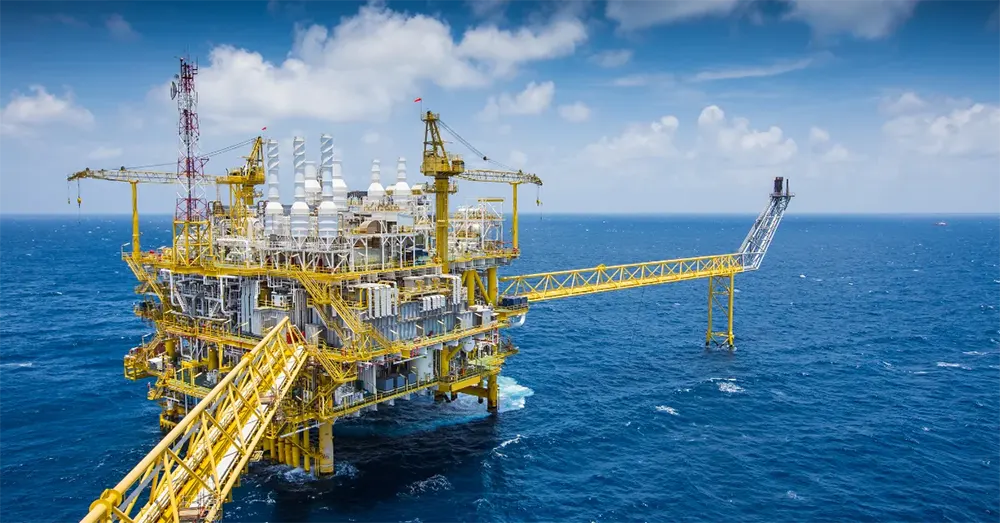Duplex stainless steels combine features of the austenitic and ferritic alloy family to offer the advantages of both with fewer drawbacks, often at a lower cost than other steel alloys.
Nevertheless, cost is only one part of the overall picture.
Could duplex stainless steel work for your next project?
Let’s see how duplex steel can be a suitable fit for your requirements.
A brief history of Duplex Stainless Steel
Among the family of stainless steels, Duplex stainless steels (DSS) were the last ones to be discovered.
They were first described by Bain and Griffiths in 1927 but it was not until the 1930s that Duplex Stainless Steels became commercially available.
These early duplex alloys were mainly limited to castings and specific uses as they had a relatively high amount of carbon.
However, by the end of the 1960s, decarburization allowed metal foundries to create low-carbon steels with high chromium and nickel content while further balancing the ferrite and austenite structure.
This led to a new generation of duplex alloys with better performance and fewer downsides.
.jpeg)
Characteristics
They are called Duplex because their metallurgical structure consists of two phases, austenite (face-centred cubic lattice) and ferrite (body centred cubic lattice) in roughly equal proportions (50%).
They are characterised by high chromium (19–28%) and molybdenum (up to 5%) and lower nickel contents than austenitic stainless steels. The most used duplex stainless steels are the 2205 (22% Chromium, 5% Nickel) and the super duplex 2507 (25% Chromium, 7% Nickel).
They are designed to provide:
- Higher corrosion resistance: These steels exhibit high resistance to both crevice corrosion and chloride pitting.
- Higher-strength than standard austenitic stainless steels such as Type 304 or 316.
- High toughness and ductility.
Both the low nickel content and the high strength give significant cost benefits as they are not so dependent on the price of nickel.
Duplex VS Austenitic Stainless Steel
The main differences in composition when compared with austenitic stainless steel, are that the duplex steels have:
- Higher chromium content, 20–28%
- Higher molybdenum, up to 5%
- Lower nickel, up to 9%
- 0.05–0.50% nitrogen
Taking a closer look at super duplex 2507, it has a higher chromium content than a standard duplex and therefore offers higher mechanical, cracking and corrosion resistance compared to other conventional austenitic stainless steels.
Applications
The applications of these steels are multiple as they are widely used in:
- Offshore and near-shore operations such as oil drilling, desalination and water treatment
- Chemical and liquid processing
- Naval parts and components
- Pollution control equipment
- Pulp and paper production
- Construction
- Hot water and brewing tanks

Duplex Stainless Steel Casting
As you already know, these materials have a great mechanical resistance which enables further refined designs; it also allows us to make pieces with thinner sections while having the same resistance as other steels with thicker sections.
From a foundry’s point of view, these materials can pose different challenges:
They are technological materials and have their complexities, which is why experience and a well-controlled process are needed to successfully manufacture these metals.
At FREEZE CAST we have been manufacturing duplex stainless steels for many years.
We are qualified by the NORSOK M650 standard. “It is a guarantee of production” says David San Fabian, Technical Director at FREEZE CAST. We are qualified for the materials; grade 4A, 5A and 6A.
The NORSOK M650 is a Norwegian standard which “establishes a set of qualification requirements to verify that the manufacturer has sufficient competence and experience of the relevant material grades and necessary facilities and equipment to manufacture these in the required shapes and sizes with acceptable properties” states Standard Norway.
At FREEZE CAST we have been manufacturing all kinds of parts, such as: impellers, diffusers or pump bodies.
-2.jpeg)
-3.jpeg)
-1.jpeg)
Do you want to get your model free casting in less than 2 weeks? Do not hesitate to contact us or call +34 921 49 00 96.
You may also be interested in reading:
